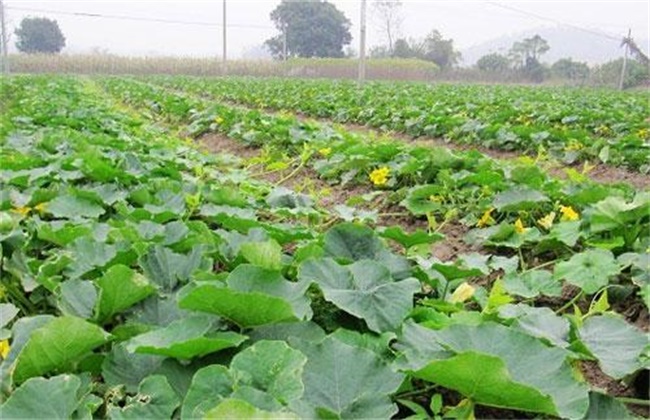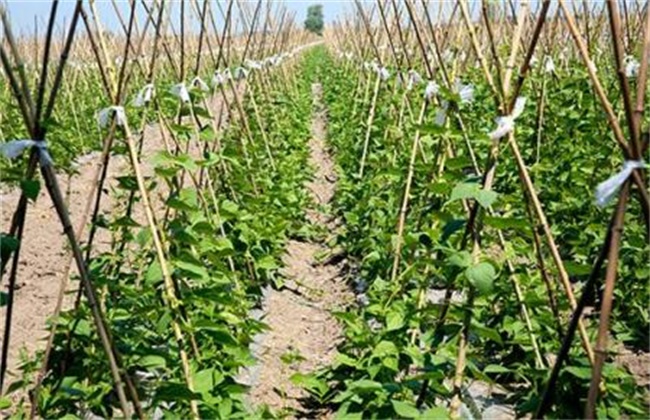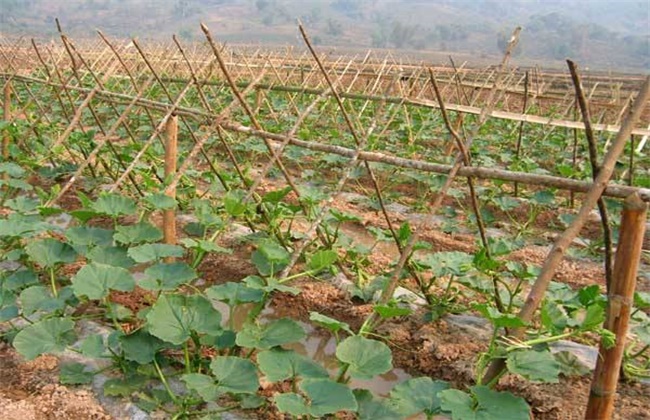Management techniques in the Middle and late stage of Pumpkin
The middle and late stage of pumpkin management refers to the management stage from 35 cm long to pumpkin harvest. At this time, management includes pressing vines, pruning and so on, which is closely related to pumpkin yield. So how to manage pumpkins in the middle and later stages? Let's get to know it with the editor.

1. Topdressing pumpkin
The topdressing of pumpkin is mainly based on available nitrogen fertilizer, with a reasonable combination of nitrogen, phosphorus and potassium, and the amount of topdressing generally accounts for 1/2 or 2/3 of the total fertilizer application. Topdressing should be carried out in batches according to the different nitrogen, phosphorus and potassium required for different growth stages of pumpkin. Nitrogen fertilizer is mainly applied at pumpkin seedling stage to promote seedling growth. Urea is generally applied 5-8 kg per mu, which requires not only adequate supply of nitrogen fertilizer, but also timely supplement of phosphorus and potassium fertilizer. To ensure that the fruit is fully expanded. Generally, after fruit setting, 10-15 kg of urea and 5-10 kg of potassium sulfate per mu were applied for a total of 1-2 times. in the middle and later stage of growth, the ability of root system to absorb nutrients weakened. In order to ensure the growth and development of pumpkin, extra-root fertilization can be used to supplement. When spraying fertilizer, you can choose low concentration of urea, potassium chloride or potassium dihydrogen phosphate, spraying every 7-10 days, 2-3 times in a row.
2. Watering and drainage
Pumpkin is a drought-resistant and waterlogging-resistant crop, which requires dry air and a certain amount of soil moisture. The air humidity is too high, which is very prone to diseases and high soil moisture, which will affect the root growth and absorption. In the middle and lower reaches of the Yangtze River, there are more Rain Water in the growing period of pumpkins, especially in the rainy season, lack of light is easy to cause the spread of diseases, and powdery mildew will occur after entering the summer drought, which will affect the growth and development of pumpkins, so water management should be based on drainage and proper watering. In the pumpkin flowering and fruit expansion period, the plant has a large demand for water, so it should be irrigated properly according to soil moisture and climate, and immediately after irrigation.
3. Plant management
The main measures of plant management in the middle and later stage are pruning and pressing vine, artificial auxiliary pollination, fruit management and so on, in order to adjust plant growth, promote melon setting, control melon node position and improve fruit commerciality. Among them, the pressing vine should be carried out in the afternoon, because the stems and leaves are easily broken and lost in the morning operation. The pressure vine can not only fix the leaf vine, but also produce adventitious roots, assist the main root to absorb nutrients and water, meet the needs of plant flowering and fruiting, and make the melon seedlings spread in a predetermined direction. For early-maturing varieties cultivated with high density, you can press the vine only once, or even not. There are also many kinds of pruning methods, mainly single-vine pruning method, double-vine pruning method, multi-vine pruning method and so on.
The above is the introduction of pumpkin management technology in the middle and later period. I hope it can help you. If you want to know more about it, please follow us.
Related
- Where is it suitable to grow horseradish in China? it is expected to see the middle altitude horseradish in Alishan.
- How to prevent tomato virus disease reasonably? (Control methods included)
- Many people like to plant towel gourd on the balcony. What are the main points of this method and management?
- What crops can chili peppers be mixed with?
- Fertilization techniques and matters needing attention in Tomato
- What are the grafting techniques for peach seedlings in spring?
- Harm and control methods of root swelling disease of Chinese cabbage
- What are the pests of sweet potatoes? How to prevent and cure it?
- Symptoms, causes and Control methods of navel Rot in Tomato
- The cause of "Cucumber rotten bibcock" in Farmers' planting Cucumber and its Control Plan



